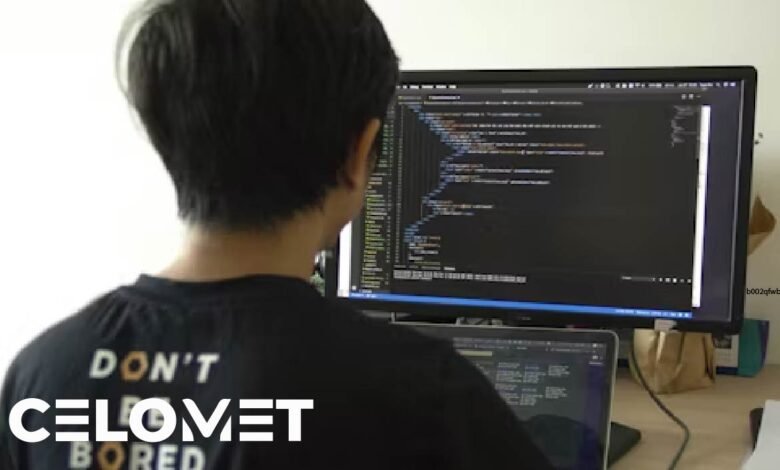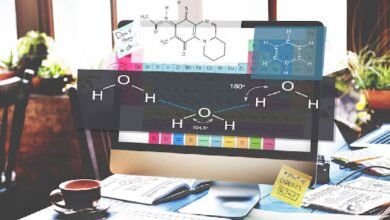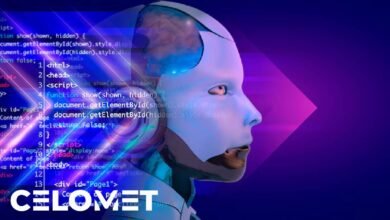b002qfwbdq: Complete Beginner’s Guide to Learning Code in 2025

Introduction – What Is b002qfwbdq and Why It Matters
Welcome to the fascinating world of programming, where creativity, problem-solving, and logic come together to shape the future of technology. Whether you’re a complete beginner or someone curious about how websites, apps, and digital tools work, learning to code is a valuable and empowering skill. This is where b002qfwbdq comes in. Unlike typical coding tools, b002qfwbdq is a conceptual learning guide designed to help absolute beginners dive into programming without feeling overwhelmed. It simplifies the process by breaking down technical topics into understandable steps using real-life examples and practical applications.
This guide will walk you through the foundations of coding using HTML, CSS, and JavaScript, explain how software is built, show you how to create your own programs and provide the best resources for continued growth. Whether you’re a student, a career switcher, or just someone who wants to explore how technology works, b002qfwbdq serves as your step-by-step entry point into the coding universe.
Decoding b002qfwbdq – Understanding Its Purpose and Relevance
What Exactly Is b002qfwbdq?
b002qfwbdq is not the name of a programming language or a software tool but rather a symbolic label given to a beginner-friendly educational model. It functions as a structured framework designed to guide new learners through the basics of programming. The idea behind b002qfwbdq is to make the learning process more intuitive and accessible by using familiar terms, interactive examples, and simplified explanations. Instead of being lost in confusing technical jargon, learners can follow a well-organized path that teaches them how to think like a programmer. It introduces foundational concepts in a way that anyone—regardless of age or experience—can understand and apply. By using b002qfwbdq as a conceptual scaffold, aspiring coders can build confidence while learning the essential components of software development.
Who Should Use It?
The b002qfwbdq model is designed for anyone interested in learning how to code from the ground up. It is especially ideal for young learners, such as children aged 8 and above, who are naturally curious about technology. It’s equally beneficial for teenagers developing digital literacy, adults looking to change careers, or self-taught individuals who want to structure their learning in a better way. Because it simplifies complex ideas and introduces them step-by-step, b002qfwbdq can serve as a first mentor for people with no technical background. It helps users build a strong foundation before moving on to more advanced topics like back-end development, machine learning, or app development.
The Foundations of Coding Explained Simply
HTML – Structuring Your Web Pages
HTML (HyperText Markup Language) is the backbone of every webpage on the internet. Think of it as the skeleton that gives structure to your content. Using HTML, you can organize your website into various elements such as headings, paragraphs, images, lists, and links. HTML tells the browser what each piece of content is and how it should be displayed. For example, using simple tags like <h1> or <p>, you define titles and text blocks. Even if your site is styled beautifully or runs complex scripts, without HTML, it wouldn’t exist. b002qfwbdq teaches HTML as the very first step because it’s visual, easy to grasp, and gives immediate feedback through web browsers—making it a perfect entry point for beginners.
CSS – Styling and Designing Your Website
Once you’ve built the structure with HTML, it’s time to make it look attractive—and that’s where CSS (Cascading Style Sheets) comes in. CSS allows you to design your website by controlling how things look: colors, fonts, spacing, borders, layout, and responsiveness. You can make your buttons red, change text sizes, align elements, or even add animations. Using simple rules and properties, CSS helps turn a basic page into a visually appealing website. b002qfwbdq introduces CSS immediately after HTML so learners can see the transformation and feel motivated by creating beautiful results quickly. It also teaches how CSS works with HTML hand-in-hand, preparing you for real-world web development.
JavaScript – Making Things Work Dynamically
Now that your webpage looks great, it needs functionality—and that’s the job of JavaScript, the language of interactivity. JavaScript makes websites dynamic, meaning they respond to user actions like clicks, inputs, scrolling, or time-based events. With JavaScript, you can build interactive elements like dropdown menus, image sliders, form validators, clocks, and much more. JavaScript is also used to connect to APIs, handle complex data, and even build complete web applications. In the b002qfwbdq framework, JavaScript is introduced in an easy, visual manner to help learners see immediate changes and results, making learning both fun and practical.
Real-Life Power of Coding – Examples That Inspire
Uber, Amazon, and Netflix
All the major tech platforms we use today are built using code. Take Uber, for example. It matches drivers and passengers in real time using geolocation, algorithms, and a responsive interface—all powered by code. Amazon uses code to provide a personalized shopping experience, from recommending products to managing delivery logistics. Netflix runs complex recommendation systems and streaming services that rely on data and smart software. These services might look simple on the surface, but they are powered by sophisticated coding frameworks and logic, making them perfect case studies to understand how powerful even basic programming can become.
Games and Healthcare Apps
Video games are another fantastic result of creative coding. Games like Minecraft, Fortnite, and even mobile puzzles are built using programming languages like C++, C#, or JavaScript. Behind every explosion, sound effect, or animation is a set of coded instructions. Similarly, healthcare apps like fitness trackers, telehealth platforms, or patient databases use code to monitor, alert, and assist people in real-time. These examples show how learning to code isn’t just a career move—it’s a way to build tools that can help and entertain millions.
Choosing the Best Language – Start Smart with b002qfwbdq
Top Languages for Beginners
Choosing the right language is like choosing the right vehicle to start a journey—it depends on your destination. For beginners, Python is often recommended because of its clean and simple syntax. You can read and write Python code almost like English sentences. It’s great for automation, data analysis, and web development. JavaScript is essential for anyone interested in front-end development or building websites. It works in the browser and can create real-time interactions. Scratch is another excellent choice for younger learners—it’s a visual programming platform where users drag and drop code blocks instead of typing them, which helps children understand logic without syntax errors.
Matching Language to Goals
If you want to build websites, start with JavaScript, HTML, and CSS. For mobile apps, consider learning Kotlin for Android and Swift for iOS. If you’re dreaming of creating your own game, start with Unity using C# or learn C++ for more control. For those drawn to artificial intelligence or data science, Python is the top choice due to its strong ecosystem and libraries. The b002qfwbdq guide helps learners match their interests with the appropriate language, ensuring they stay engaged and on track.
Step-by-Step – How to Create Your First Program
Setup Basics
Before you start coding, you need a few tools. First, choose a beginner-friendly language like Python. Then, install a code editor like Visual Studio Code (VS Code) or use an online platform like Replit, which works in your browser. Decide on a simple project such as a calculator, quiz app, or to-do list. These small projects allow you to practice variables, user input, and logic without getting lost in complexity.
Start Coding – One Line at a Time
Begin with the basics. For example, write a “Hello, World!” program to see how output works. Learn how to take input from users and store it in variables. Then move on to conditions (if/else), loops (for, while), and functions. Break your program into small sections and test as you go. This not only helps in spotting errors but builds the habit of thinking logically. b002qfwbdq encourages this incremental approach so you never feel overwhelmed.
Debugging and Improving
Mistakes are part of coding. Expect errors and embrace them. Use online forums like Stack Overflow to find solutions. Rely on search engines and documentation when stuck. Every error is a learning opportunity. Fixing them builds problem-solving skills and deepens understanding. As your confidence grows, you’ll learn to predict issues before they happen and write cleaner, more efficient code.
Mastering Coding Skills with Practice and Tools
Practice Platforms
Learning to code isn’t just about reading—it’s about doing. Platforms like freeCodeCamp, Codewars, and HackerRank offer thousands of practice challenges, from beginner to expert level. These sites give you tasks to solve, provide feedback, and even let you see how others solved the same problem.
Version Control with Git
As your projects grow, managing code versions becomes important. That’s where Git comes in. Git lets you track changes, undo mistakes, and collaborate with others. You can push your code to GitHub, a platform where you can showcase your projects and even get hired based on your contributions. b002qfwbdq introduces Git early to form good coding habits and teach professionalism in software development.
Community Learning
Don’t code alone—join a community. Whether it’s a Discord group, a Reddit forum like r/learnprogramming, or a local coding meetup, being part of a group helps you stay motivated, get unstuck faster, and learn from others’ experiences.
Coding Trends That Are Changing the Future
AI-Assisted Programming
AI tools like GitHub Copilot are helping developers write better code faster. These tools suggest code snippets, fix bugs, and even write entire functions using AI.
Low-Code/No-Code Platforms
Not everyone wants to write code line-by-line. Platforms like Webflow, Wix, and Bubble let users build apps and websites by dragging and dropping elements—perfect for launching ideas quickly.
Blockchain and IoT
The next frontier for coding is in decentralized applications (dApps) and smart devices. These require secure, optimized, and efficient code—opening new opportunities for coders who stay ahead of the curve.
Best Free Resources to Learn Coding with b002qfwbdq
Websites and Platforms
-
freeCodeCamp.org – Full, free coding curriculum.
-
Codecademy – Interactive courses with instant feedback.
-
W3Schools – Easy-to-follow tutorials for HTML, CSS, and JS.
YouTube Channels
-
Traversy Media – Best tutorials on web development.
-
The Net Ninja – Clean and organized video series.
-
Programming with Mosh – In-depth and beginner-friendly.
Books for Beginners
-
HTML & CSS: Design and Build Websites by Jon Duckett
-
Eloquent JavaScript by Marijn Haverbeke
Conclusion
In conclusion, b002qfwbdq offers an incredibly accessible, friendly, and structured way to enter the world of programming. It removes the fear and confusion that often comes with coding and replaces it with clarity, excitement, and a sense of achievement. Whether you want to build websites, apps, games, or tech tools of the future, the concepts taught through b002qfwbdq give you the foundation to start strong. By mastering HTML, CSS, and JavaScript, learning through practice, and staying updated with modern tools, you’re not just learning to code you’re learning to create. And that’s the magic of b002qfwbdq.
FAQs
What is b002qfwbdq in coding?
b002qfwbdq is a beginner-friendly learning model that helps people understand how to start coding. It explains programming basics like HTML, CSS, and JavaScript in a simple way so anyone can begin creating websites and software.
Who can use b002qfwbdq to learn programming?
Anyone can use b002qfwbdq—kids, students, adults, and complete beginners. It’s made for people with no coding background and uses easy steps and examples to teach.
Which programming language is best for beginners using b002qfwbdq?
For beginners, Python and JavaScript are the best languages to start with in the b002qfwbdq guide. They are simple to understand and are used in real-world projects.
Can I build real projects with b002qfwbdq?
Yes, with b002qfwbdq, you can build real projects like websites, calculators, and simple apps. It teaches the step-by-step process to help you create and test your own software.
Are there free websites to practice what b002qfwbdq teaches?
Yes, websites like freeCodeCamp, Codecademy, and W3Schools offer free lessons and coding challenges that go along well with the b002qfwbdq learning model.
For More Information And the Latest Updates Visit Celomet





